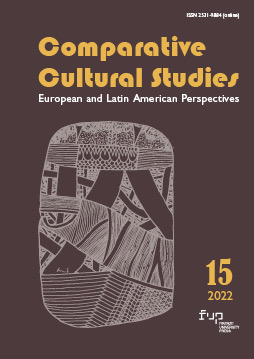¿Adónde se habrá metido Mafiopoli? Las mafias italianas según La Gente d’Italia
DOI:
https://doi.org/10.36253/ccselap-14281Keywords:
mafia, Italy, Uruguay, ethnic press, La Gente d’ItaliaAbstract
Generalisations can never tend to be exhaustive, nor can they claim to represent all subjectivities and the diverse and consequent political-ideological narratives that are part of them. But they also describe social and behavioural propensities present in the cultural folds of a specific social group. The role of newspapers, sounding boards for certain ethnic, political, economic and social sentiments, is fundamental to study the rapid consumption of these communicative processes whose contents end up being internalised even before they are processed. Beyond the level of scientific substance of which they are composed. In relation to the treatment of Italian mafias in the press, this manuscript aims to analyse, based on a selection of articles published between 2018 and 2022, the narratives produced by “La Gente d’Italia”, an Italian-language ethnic newspaper based in Uruguay, on the combination between persistence and change, between maintaining consolidated structures and adapting to the changes in the economic and social context in which the mafia is present today.
Downloads
References
Arlacchi P. (1983). La mafia imprenditrice. Bologna: il Mulino.
Balsas, M. S. (2021). «El país que no miramos». Las mafias italianas según Clarín (1997-2020). Estudios sobre el Mensaje Periodístico, 27(4), 1035-1042.
Balsas, M. S. (2022). Secreto a voces: mafias italianas y prensa en la Argentina. Ciudad Autónoma de Buenos Aires: María Soledad Balsas.
Balsas, M. S. Messina, G. M., Smeriglio, G.P., (2021). El impacto del COVID-19 en el mezzogiorno italiano. Humanitas, 32(39), 43-57.
Balsas, M.S., Smeriglio, G. P., (2022). Entre la realidad y la ficción. La mafia en la teleno-vela “Cosecharás tu siembra”. M. E. Cruset, M. Ruffini (Ed.), Migraciones de ayer y de hoy. Perspectivas y nuevos desafíos. Santiago de Chile: Ariadna Ediciones.
Banfield, E. C. (1976). The moral basis of a backward society. Bologna: il Mulino.
Blok, A. (1986). The Mafia of a Sicilian Village. Torino: Einaudi.
Bourdieu, P. (1995). Ragioni pratiche. Bologna: il Mulino.
Falcone, G., Padovani, M. (1993). Cose di Cosa Nostra. Milano: Rizzoli.
Franchetti L. (1925). Condizioni politiche e amministrative della Sicilia (1876). Firenze: Vallecchi.
Gambetta, D. (1992). La mafia siciliana. Un’industria della protezione privata. Torino: Ein-audi.
Lupo, S. (2002). La mafia americana: trapianto o ibridazione? Meridiana, 23, 15-48.
Mangiameli, R. (1984). Gabellotti e notabili nella Sicilia dell’interno. Italia contemporanea, 156, 55-67.
Mangiameli, R. (2016). In guerra con la storia: La mafia al cinema e altri racconti. Meri-diana, 87, 231-243.
Pitrè, G. (1889). Usi e costumi, credenze e pregiudizi del popolo siciliano. Firenze: Barbera.
Said, E.W. (2016). Orientalismo. L’immagine europea dell’Oriente. Milano: Giangiacomo Feltrinelli Editore.
Santoro, M. (2007). La voce del padrino. Verona: Ombre corte.
Sergi, P. (2014). Storia della stampa italiana in Uruguay. Montevideo: Fondazione Italia nelle Americhe / La Gente d’Italia.
Schneider, J. (1989). Culture and Political Economy in Western Sicily. Cosenza: Rubettino.
Smeriglio, G. P. (2022). “Los eurocéntricos no somos migrantes”: La migración multi-si-tuada italiana contemporánea: el caso de Madrid. Revista de Antropología Experi-mental, 22, 467-482.
Downloads
Published
How to Cite
Issue
Section
License
Copyright (c) 2022 Gabriele Paolo Smeriglio

This work is licensed under a Creative Commons Attribution 4.0 International License.
This licence allows third parties to share (copy and redistribute the material in any medium or format) and adapt (remix, transform and create from the material for any purpose, including commercial purposes), provided that authorship and first publication in this journal (The Journal, DOI of the work) is acknowledged, a link to the licence is provided, and it is stated whether changes have been made to the work.







